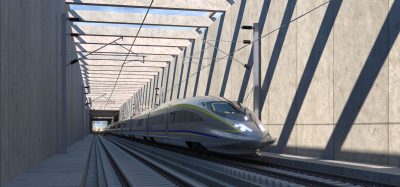Development of railway security policies
Posted: 3 November 2005 | | No comments yet
After having long assumed responsibility for technical aspects linked to traffic safety and installations, railway undertakings have progressively been taking over management of the day-to-day security problems of persons and trains.
After having long assumed responsibility for technical aspects linked to traffic safety and installations, railway undertakings have progressively been taking over management of the day-to-day security problems of persons and trains.
After having long assumed responsibility for technical aspects linked to traffic safety and installations, railway undertakings have progressively been taking over management of the day-to-day security problems of persons and trains.
Much as safety-related aspects used to be a core part of the trade as assumed and claimed, so enabling the railways to build their image around the reliability of this transport mode, correspondingly security-related problems have long been perceived as being an exogenous constraint imposed by events, and over which railway undertakings had very little legitimacy.
Railways therefore structured their responses in reaction to events that implicated them because these events had occurred on their premises or trains, and contributed to the development of an insecure environment that was negative with respect to customers and staff alike, without the responses having for that matter necessarily integrated this recent phenomenon as part of their prerequisites for normal operations to take place.
These responses were consequently short-term responses that prioritised social rest, ranging from the recruitment of staff more or less proficient in the use of increasingly sophisticated techniques and technologies, but the constant pressure of events all too often proved detrimental to a proper feedback process, to a genuinely critical analysis (positive and negative) of decisions made and of work performed in this framework (and of the profitability/efficiency of investments undertaken).
However, railway undertakings conscious of the security challenges involved, hence the need to develop sustainable strategies, have started promoting the concept of experience feedback and good-practice exchanges without this actually translating into a genuine common model, given that the deep-rooted causes of malevolence and delinquency to which the railways are subjected are, as we all know, intimately linked to their social and economic environment, also bearing in mind that some responses closely depend on the very different administrative and legal organisations prevailing in the different countries.
One of the core ideas to have emerged in the course of the different exchanges, for example during the world security forums organised by UIC every two years since 2000, is the relevance of integrating security ‘upstream’ within the quality strategy for transport service production as opposed to incorporating it ‘downstream’ into a predetermined technical reality. This means that the concern of day-to-day security must be built into the design of stations and installations, the organisation of space and into the definition of trades and jobs.
This means, inter alia, that a security policy cannot be confined to the actions of specialist personnel working for railway undertakings or public authorities, but that it must be articulated into the actions and attitudes of all company staff members who impact on the objective security conditions, and more importantly, on the feeling of security as experienced by customers.
This apart, we must assume that none of the trades specific to railways, including those involving interfacing with the public, are immune from security-related incidents which fortunately are not serious for most but which cause stress, and generate behavioural difficulties. In this regard, several countries have set in place legal mechanisms to reinforce the protection of staff by stiffening penalties for violent misconduct against them, in parallel to this the railway undertakings themselves developed flanking or support measures in the interest of staff subjected to acts of aggression.
Yet the obligation placed on railway undertakings to intervene in the security field does not for that matter confer upon them full or exclusive legitimacy in an area that comes primarily within the remit of the public authorities. The exercise therefore consists of acting alongside these authorities and not in their stead. The respective roles and competencies must be clarified on a permanent basis and it should be observed here that all possible scenarios exist, ranging from countries where only the public authorities (with their general or specialist competencies) are the sole players, to those where railway undertakings have developed an in-house service using ever increasing human resources, or again to those where private security firms play a central role.
A typical and original case of this is provided by Switzerland, where the staff of a subsidiary company set up by Swiss Railways in partnership with a private security firm can be sworn-in by the tribunals in order to consolidate the legal efficiency of their activities.
This clarification effort is of course a gradual process, but the key phases frequently date to recent times. In the case of France, the specific nature of the SNCF security services (La Surveillance Générale = General Surveillance Unit) was only ‘consecrated’ in the context of the Law on 15 November 2001 on day-to-day security.
The essential provisions of this law are not sufficient in themselves to ordain cooperation or partnership procedures on a daily basis to achieve optimum global efficiency, nor their financial consequences and their division between public budgets and those of railway undertakings. To sum-up here in a few words; should the cost of day-to-day security in transport be borne by the taxpayer or by end-users, and in what proportions?
The growing importance of this phenomenon has caused railway undertakings to develop detailed analyses of security (and non-security) costs, some of whose components are easy to determine but others much less, so does the focus on the shortfall result from customer disaffection? For security motives or due to a feeling of insecurity or again when an attempt is made to quantify the benefits procured by prevention policies upstream (educational presence in school circles), or due to the presence of uniformed staff put there to deter the potential perpetrators from acts of malevolence or delinquency from committing such acts.
A unique example is provided by Spain which instituted, through legislation voted on 27 December 2001, a security levy on all tickets (high-speed trains, mainline trains, regional and local trains) sold by RENFE. This arrangement was subsequently incorporated into the 2003 Law relative to the rail sector. This gradual levy based on the value of the ticket or on the journey distance, generated €12 million in 2004, which admittedly is far from offsetting security-related expenditure, yet nevertheless remains a major resource.
Within the framework of the Spanish model of separation between infrastructure manager (ADIF) and railway operator (RENFE), ADIF is responsible for collecting the levy and subsequently sharing it between the two entities, which now operate their own security policy structure.
This example illustrates the new institutional environment within which the security policies decided must be implemented. After having gradually instituted principles for such policies and organised the division of roles between the rail sector and the public authorities, the exercise today is to define relations within the rail sector between infrastructure managers and train operators so as to maintain a global security vision vital to the further development of progress achieved in this field.
The need for this global vision raises different issues progressively as the sector is liberalised, which begs the question; which policies ensuring the security of rail borne freight initially, then of passengers subsequently, should fall within the remit of new entrants?
Should security be considered – even if this then means developing standards – as an obligation or should it be based on a voluntary approach, and so possibly risk becoming an element of competition through a different quality, a different guarantee of the integrity of the transport service provided?
Another problem that will arise concerns the status of the security services of railway undertakings. Should these services be administered by the infrastructure manager, in which case they must be made available to the different operators under conditions of equity to be defined with due consideration of their cost but also of the nature of the security policies conducted by these operators? Or should they instead be run by the ‘initial’ railway operator, in which case the equality of competitive conditions should allow new operators, if such is their wish, to operate a similar service, which then raises crucial issues with respect to the national authorities when these services – by virtue of national legislations – qualify for special prerogatives?
Looking beyond these different aspects of day-to-day security, the analysis must obviously integrate the constraints linked to the newly-emerged risks of terrorism and its transnational spread. The rail transport mode, given the sheer volume of its traffic flows, its size, and given the political and mediatic ramifications of any act of aggression against this mode, remains a potential target, which therefore means that coordination of measures taken at European levels is absolutely crucial.
Mass public transport has always been a target or an opportunity for terrorist attacks, on account of their repercussions on the people and the country. Even if such events have not been the most frequent attacks, they always have had the strongest impact in the media and the political world.
After the attacks in Tokyo, Moscow, Paris and New York, in a close relationship with US authorities via the Federal Railroad Administration, has commenced work on important terrorism matters. After a work session in Budapest at the end of 2001 and a seminar in Japan in May 2002, the UIC has opened discussions with UITP (International Union of Public Transport, based in Brussels) and the two Chairmen signed a common declaration in June 2004. The main points of the declaration are:
- Specialist governmental services to analyse threats
- To analyse the vulnerability of the railways or public transport
- The confrontation between both these analysis has to be regularly checked and a way to exchange confidential or secret information between the authorities and the public transport companies has to be created or improved
- Regular emergency exercises have to be carried out to ensure sufficient preventive measures are being practised
The attacks in Madrid and London confirmed the importance of these steps and we have to be permanently aware that terrorism is constantly evolving which leads us to question the role of staff and the use of CCTV etc.
Our challenge and responsibility is to make public transport safer and more secure to prevent terrorists from using public transport as a place for criminal activities. The fundamental right for citizens to use public transport independently is at stake.
It is vital that this debate is engaged early enough so that the forthcoming European texts on railway security (the Commission’s DG TREN has instituted since 1 May 2004 a division to deal with ‘the security of persons, property and installations’) should incorporate developments already recorded and should lead to a definition and sustainable division of roles between the respective players. Clarification of these guidelines upstream should make it possible to avoid duplicating processes of the type already experienced before by the railway undertakings, or to being forced avoid framing – under the pressure of events – instant responses that must then be given a more permanent status, and to concentrate instead on defining a sustainable organisational framework essential to the consolidation of sector efficiency. This then is the challenge that we need to confront over the coming period.







